Blog in Polish/po polsku: http://ontario-nature-polish.blogspot.com/2011/09/emily-provincial-park-on.html
Emily Provincial Park is located in the Kawathra Lakes, an area of hundreds of beautiful lakes in the south-central part of Ontario. The name is derived from an Indian word „Ka-wa-tae-gum-maug”, coined in 1895 by aboriginal Martha Whetung of the Curve lake First Nations. We used the park as our camping base and it made a perfect launching pad for our canoeing trips on nearby lakes.
On our way from Toronto to the park, we stopped in a small private zoo south of Peterborough, “The Jungle Cat World Wildlife Park” (www.junglecatworld.com ), where we could see lions, tigers, goats, monkeys, birds, otters, lamas and many other interesting animals—as well as play with some of them (what a wonderful treat for kids!). Our timing was perfect—it was the feeding time and the zoo staff was on hand, providing information on the animals and answering visitors’ questions. Nearby there was a large animal (pet) cemetery—judging upon the number of grave tombs, it must have been very popular. Many inscriptions were extremely poignant, extolling virtues of the buried animals and the irreparable loss caused by their passing. You rarely see such heartbreaking inscriptions at ‘human’ cemeteries—and the ones at the pet cemetery were entirely coming from their owners’ heart—not because of an obligation or tradition, as it often happens after people die... When I read long obituaries in newspapers, almost each and every recently deceased individual appears to have been such a wonderful, generous, kind and fantastic person that I am always sorry I did not meet him while he was alive!
Because I spotted a Canadian and German flags at the zoo’s main building, I inferred that the owner must be from Germany. “I’m curious if he is from East or West Germany”, I joked. Several minutes later I had an opportunity to meet him—the first thing I noticed was a small pin he was wearing—it was the flag of East Germany! Indeed, he did come from East Germany; after immigrating to Canada, he founded this zoo and has been running it since then. Later we met his wife and son and I promised to mail them a very good movie about East Germany, “Good Bye, Lenin” as I was sure he would enjoy watching it.
Emily Provincial Park is, in my opinion, an average park. However, since we arrived on September 05, 2011, on Monday (it was the Labour Day weekend, which traditionally is the last long weekend of the summer and the next day school starts), the park was almost vacant. Even though the site we were staying on (# 38) was quite exposed and adjacent to many other campsites, we had plenty of privacy as nobody else was camping around. That is why we try to visit more remote areas or parks in July and August, at the peak season—they are hardly ever full and no reservations are required; before and after those months we visit all the other parks, which are very popular and crowded in the summer, but in other months are quiet and mostly empty.
We were regularly visited by chipmunks, they loved peanuts and were very eager to get as many of them as possible. Soon, however, they had a rival--a rather brave Blue Jay (a popular bird with very characteristic blue feathers). It sat on a nearby tree while the chipmunk was stuffing his pouches with the peanuts and once they became full, it also grabbed a peanut or two in his mouth and was heading to his burrow. Then the Blue Jay commenced his attack, trying to snatch the peanut from the chipmunk! Besides, a squirrel with an impressive, bushy tail, would visit the campsite a few times, but it was much more timid than the usually very friendly and persistent chipmunk. At night we saw raccoons and one skunk; in fact, I am more afraid of skunks than of bears, yet I know that skunks never attack (by releasing their foul smelling liquid) unprovoked, so we were observing it for some time until it vanished in the darkness.
During our stay at the park we went canoeing on three lakes: Pigeon Lake, Lovesick Lake and Clear Lake, as well as we paddled to Wolf Island. The island is part of Wolf Lake Provincial Park and we saw several vacant campsites with recently-used fire pits. Later we found out that camping was not allowed at this park—what a pity! The island, with adjoining headland, makes a natural ‘dam’ between Lovesick Lake and Lower Buckhorn Lake. Because the famous Trent-Severn Waterway (that runs between Georgian Bay and Lake Ontario) criss-crosses these lakes, there are a few dams and locks between those lakes—well, the whole waterway is dotted with locks!
The three lakes were quite sizable and we had to watch the waves. Plenty of cottages were built along their shores, yet there were not any rocks—the Canadian Shield starts just a few kilometres to the north of the lakes—in comparison to the ‘northern’ lakes, the difference was striking! Of course, I much prefer the northern lakes, dotted with rocks, rocky island, inlets, channels and shores!
In addition to canoeing, we also drove a lot in the area, visiting a few very picturesque towns—Lakefield, Bobcaygeon, Burleight Falls, young’s Point, Buckhorn, Omemee.
Yet the most memorable was the stop at the Curve Lake Indian Reserve. We visited an amazing store/gallery “Whetung Ojibwa Crafts and Art Gallery” (http://www.whetung.com) and spent at least 2 hours there (and that was why we did not have the time to go canoeing that day).
It had incredibly original Indian craft—paintings, carvings, masks, photographs, china, necklaces, jewellery and many other very unique works of art. I bought over 10 postcards with native motives, but I wish I had bought a few paintings that I liked very much! Well, maybe next time!
One day we visited a very charming and remarkable town of Lakefield. In the 1830s two sisters, Susanna Moodie and Catharine Parr Traill along with their husbands arrived from England in the Lakefield area and in the middle of dense forest, on the shores of Katchewanooka Lake, began their pioneer settlement (of course, the town of Lakefield did not exist at that time—it was their brother, Samuel Strickland, who was founded Lakefield and who also had a farm in that area). Susanna Moodie and Catharine Parr Traill were exceptional women, who even before coming to Canada had written several books back in England (their sister, Agnes Strickland, who resided in England, was also a writer). They were very intelligent, perceptive, observant and were able to accurately describe their new pioneer life which was full of hardships and totally unlike the one they led in England. Their books—among others, “The Backwoods of Canada” and “Roughing it in the Bush”—to this day are Canadian classics and constitute an important source of information on pioneer life in Canada. There is a commemorative plaque at the site of Susanna Moodie’s farm (which was so beautifully described in her books), one can see a house in which Catherine Parr Traill lived later in her life as well as their brother Samuel’s imposing mansion still remains. In the 1970s Margaret Laurence, a very well-known Canadian author moved to Lakefield and it was in her house in Lakefield where he committed suicide in 1987. The house still stands and there is a plaque dedicated to her. Lakefield is also the home of the renowned private school, “Lakefield College School”, on the shores of Katchewanooka Lake—Prince Andrew, son of Queen Elizabeth II attended it in 1977. Many years ago Lakefield could be reached from Peterborough by train; nowadays the tracks are gone, but fortunately the train station survives, turned into a quaint second-hand bookshop.
Before leaving for Toronto, we drove to a small town of Omemee, close to Emily Park, where we got a delicious pizza, walked to the river and had a picnic near the Pigeon River near the dam (in the native language “Omemee” means “Pigeon”; the name of one of Toronto’s district, Mimico, is also derived from the same word and means “plentiful in pigeons’). Overall, it was a very nice trip, as we were able to paddle on new lakes.
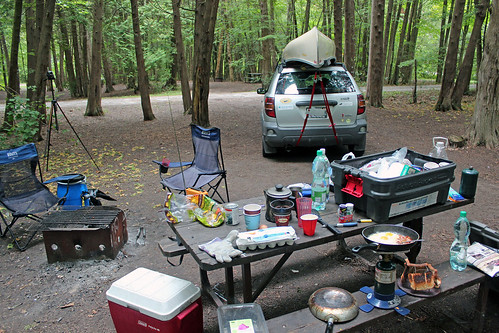
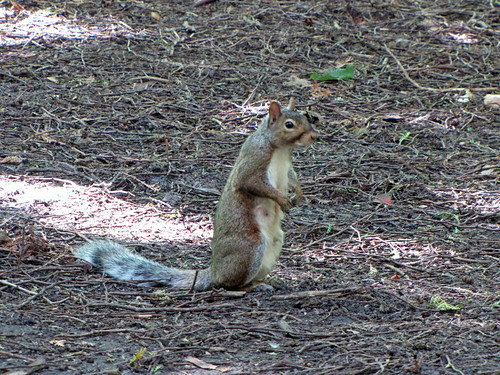
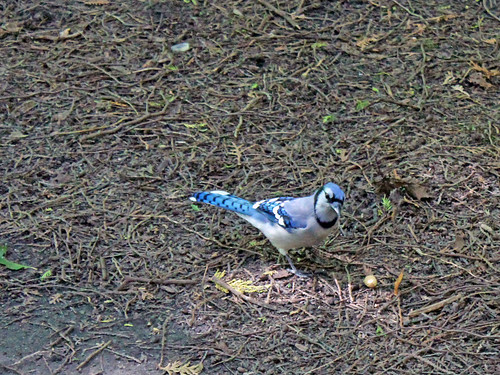
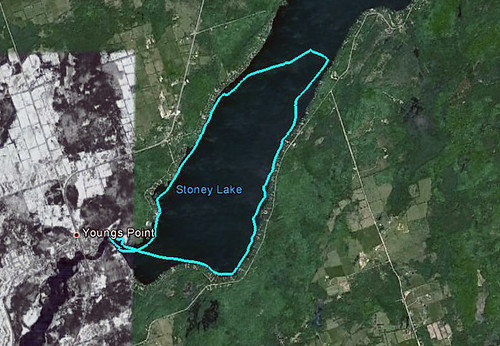

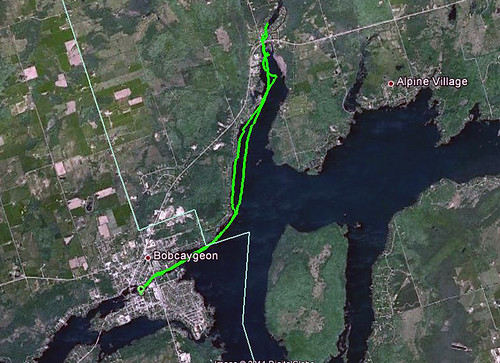
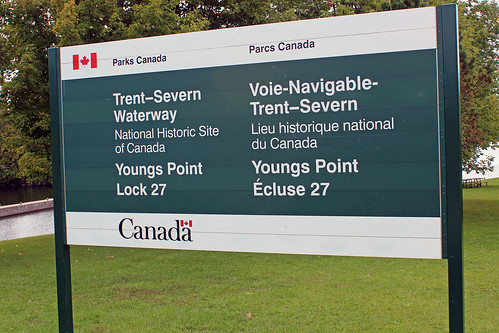





No comments:
Post a Comment